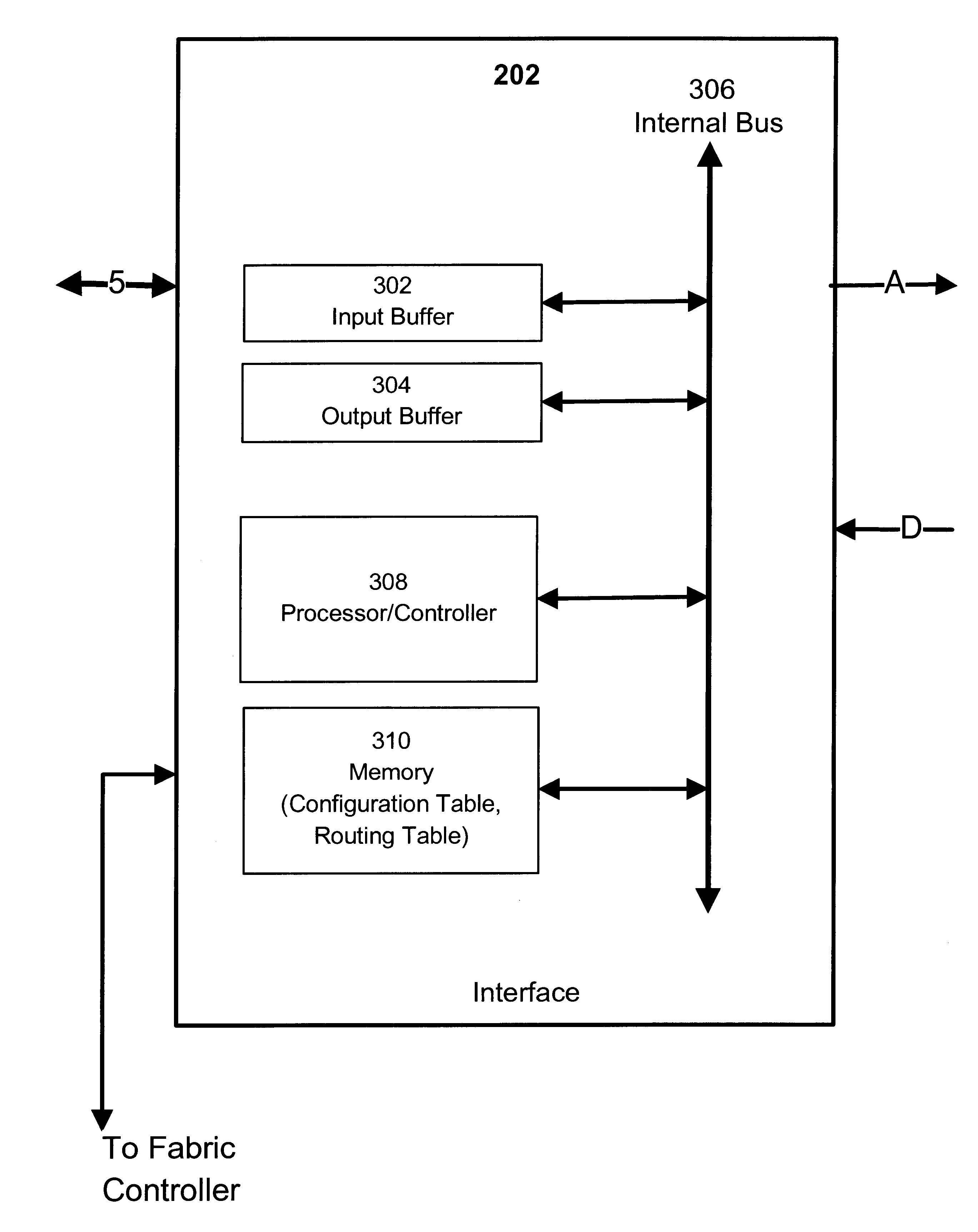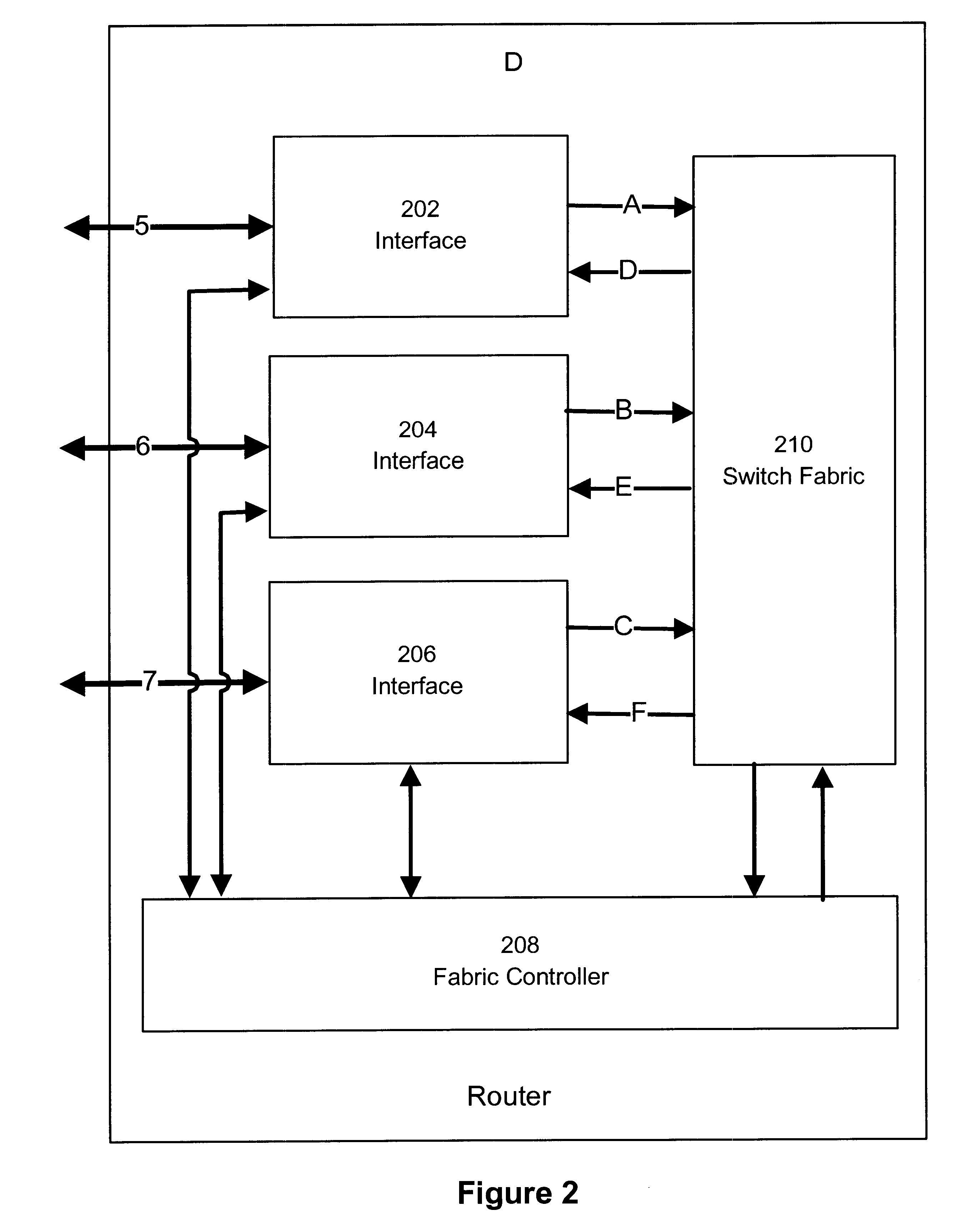Method and apparatus for simple IP-layer bandwidth allocation using ingress control of egress bandwidth
a technology of ingress control and egress bandwidth, applied in the field of switch devices, can solve the problems of inability to economically sound, transfer rate, and further complicated output buffer models, and achieve the effect of limiting the possibility of congestion
- Summary
- Abstract
- Description
- Claims
- Application Information
AI Technical Summary
Benefits of technology
Problems solved by technology
Method used
Image
Examples
Embodiment Construction
FIG. 1 illustrates an example of a situation where two different classes of traffic travel through a data communications network that has adopted the Internet Protocol (IP) for its internetwork procedures. The two different classes of traffic present are C1 and C2. For a given logical egress port, C1 traffic is always able to use up the reserved amount of allocated bandwidth if it has traffic to send; however, this class is never allowed to use more than the reserved amount even if there is bandwidth available. As to the C2 class, for a given logical egress port, C2 traffic is always able to use up the reserved amount of bandwidth if it has traffic to send; however, if it has more traffic to send it can compete equally with other permitted classes for any available bandwidth, up to a certain maximum amount. In the case of FIG. 1, an Ottawa client 100 is ending traffic of class C1 (reserved bandwidth without overflow) to Harlow, whereas a Richardson client 110 is sending traffic of c...
PUM
 Login to View More
Login to View More Abstract
Description
Claims
Application Information
 Login to View More
Login to View More - R&D
- Intellectual Property
- Life Sciences
- Materials
- Tech Scout
- Unparalleled Data Quality
- Higher Quality Content
- 60% Fewer Hallucinations
Browse by: Latest US Patents, China's latest patents, Technical Efficacy Thesaurus, Application Domain, Technology Topic, Popular Technical Reports.
© 2025 PatSnap. All rights reserved.Legal|Privacy policy|Modern Slavery Act Transparency Statement|Sitemap|About US| Contact US: help@patsnap.com



